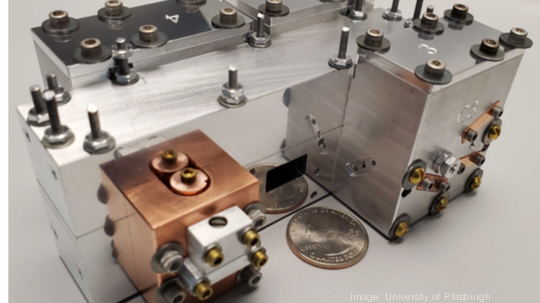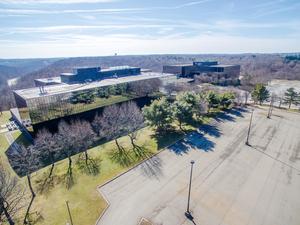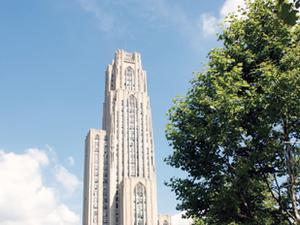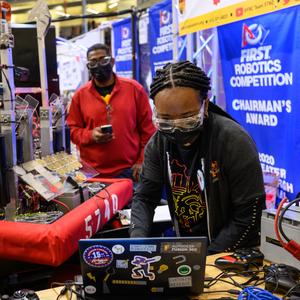
Researchers at the University of Pittsburgh have successfully developed and patented a new modular-based system for connecting together qubits — a unit of measurement and a building block behind quantum computing.
In modern computing, computers use bits of information to solve problems, amid a myriad of other applications that computers can do. The bits that make up modern computers consist of ones and zeros, a signal that translates to being either on and off.
The qubits used in quantum computing can also exist in an on or off state, but qubits also possess the ability to exist in a state between the two, which allows for these machines to solve advanced mathematical problems in a more realistic timeframe compared to what would take modern computers centuries to solve.
Today, companies that make the largest quantum computers can have up to 100 qubits in a machine at a time. The machine made by Pitt researchers is a fraction of the size compared to what these computing giants have been able to make, but the methodology behind the modular-like design of Pitt's qubit arranging system could have larger ramifications for the future of quantum computing itself.
"We're pretty excited because it's a full-on quantum computer, it's not a big one, it's packed pretty small, it's got seven qubits in it whereas the biggest ones in the world have 100 qubits now," University of Pittsburgh Physics & Astronomy Assistant Professor Michael Hatridge, who works in the Kenneth P. Dietrich School of Arts and Sciences, said. "But we built it all on the University of Pittsburgh campus. We used our own fabrication, we designed it in-house, we have a patent on it, and so we're pretty stoked about our ability to get involved in this field and do some cool stuff and it's going to lead to follow-up research and bigger machines and (so forth)."
With the design made by the Pitt researchers, the new qubit arrangement offers a more efficient and more practical use compared to how it has traditionally been done since the study of quantum computing began. Hatridge said the team's model will let researchers working in the field of quantum computing to conduct a wider array of research across more algorithms. The design also allows for qubits that fail to be replaced, whereas before, quantum computing-making companies would just build around the failed qubits.
The research team, which includes Department of Physics & Astronomy faculty members Roger Mong and David Pekker as well as graduate students Chao Zhou and Pinlei Lu, published a peer-reviewed paper on the technology in September 2021 theorizing the concept. Now, it's working.
"Most of the companies (making quantum computers) are building something called a surface code — it's really just every qubit talks to its four nearest neighbors, you can kind of imagine a square grid where every point on the grid is a qubit, and they talk to their neighbors, and technically, then if you need to talk to somebody 10 neighbors away, you play some quantum version of the telephone game; you talk to Alice, who talks to Bob, who talks to Charlie who talks to whoever until you get over and the final person sees your signal," Hatridge said. "But that's really inefficient, and it makes the computer less powerful because you spend a lot of your time moving through the fabric. We're not the only ones working in this area that's called modular quantum computing, but I think what that paper is about is our first attempt to build a machine that instead of just getting bigger by sort of adding more squares to your grid and having things get further apart, we're trying to build something that more resembles a common tree."
With this tree-like design, which Hatridge said is formally referred to as a quantum state router, operators of quantum computers can swap our failed qubits with new ones.
Funding for the research comes from the Air Force Office of Scientific Research and the lab the research is being conducted in receives funding from the Department of Defense and the National Science Foundation, among others.









